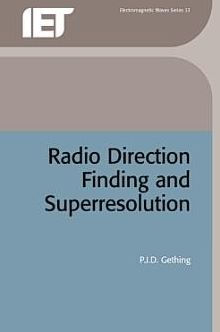5
1
9780863412387


Radio Direction Finding and Superresolution / Edition 2 available in Hardcover

Radio Direction Finding and Superresolution / Edition 2
- ISBN-10:
- 0863412386
- ISBN-13:
- 9780863412387
- Pub. Date:
- 06/30/1991
- Publisher:
- The Institution of Engineering and Technology
- ISBN-10:
- 0863412386
- ISBN-13:
- 9780863412387
- Pub. Date:
- 06/30/1991
- Publisher:
- The Institution of Engineering and Technology
175.0
In Stock

Product Details
| ISBN-13: | 9780863412387 |
|---|---|
| Publisher: | The Institution of Engineering and Technology |
| Publication date: | 06/30/1991 |
| Series: | Electromagnetic Waves |
| Edition description: | Subsequent |
| Pages: | 386 |
| Product dimensions: | 6.14(w) x 9.21(h) x (d) |
From the B&N Reads Blog
